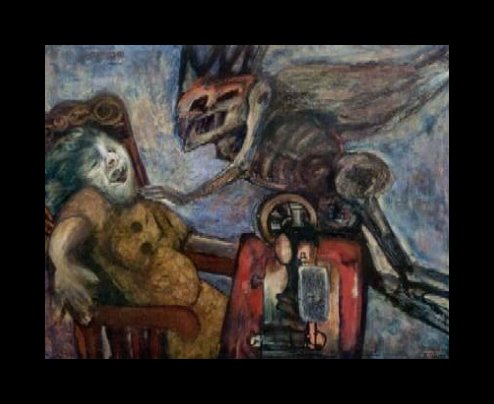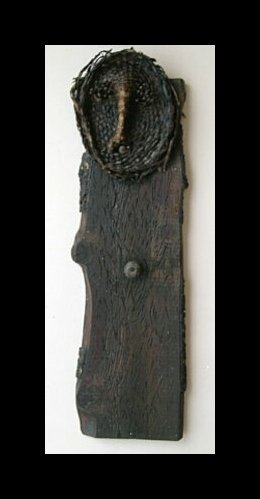Antonia Eiriz (1929-1995)
Get a Eiriz Certificate of Authenticity for your painting or a COA for your Eiriz drawing or sculpture.
For all your Eiriz artworks you need a Certificate of Authenticity in order to sell, to insure or to donate for a tax deduction.
How to get a Eiriz Certificate of Authenticity is easy. Just send us photos and dimensions and tell us what you know about the origin or history of your Eiriz painting, drawing or sculpture.
If you want to sell your Eiriz painting, drawing or sculpture use our selling services. We offer Eiriz selling help, selling advice, private treaty sales and full brokerage.
We have been authenticating Eiriz and issuing certificates of authenticity since 2002. We are recognized Eiriz experts and Eiriz certified appraisers. We issue COAs and appraisals for all Eiriz artworks.
Our Eiriz paintings, drawings and sculptures authentications are accepted and respected worldwide.
Each COA is backed by in-depth research and analysis authentication reports.
The Eiriz certificates of authenticity we issue are based on solid, reliable and fully referenced art investigations, authentication research, analytical work and forensic studies.
We are available to examine your Eiriz painting, drawing or sculpture anywhere in the world.
You will generally receive your certificates of authenticity and authentication report within two weeks. Some complicated cases with difficult to research Eiriz paintings, drawings or sculpture take longer.
Our clients include Eiriz collectors, investors, tax authorities, insurance adjusters, appraisers, valuers, auctioneers, Federal agencies and many law firms.
We perform Antonia Eiriz art authentication, appraisal, certificates of authenticity (COA), analysis, research, scientific tests , full art authentications. We will help you sell your Antonia Eiriz or we will sell it for you.
Schooled at San Alejandro, and later, a teacher herself, Antonia Eiriz helped pave the way along with Amelia Pelaez for female Cuban artist. She taught some of the finest contemporary Cuban artists today and left her mark on the world with her disturbing depictions of Expressionism.
Little is known outside of Cuba about this accomplished painter, in part due to the fact that she was a woman working in a generally male dominated area. Her subjects were neither a product of government propaganda, were they directly motivated as expression against the government. However, much of her work still fell sharply outside the limitations of governmentally accepted work. Eiriz simply was not given the artistic credit that she deserved in her lifetime, in part due to the graphic and disturbing nature of her work.
Like something out of a frightening Hollywood movie comes the art of Antonia Eiriz. Dark and twisted creatures leap from her canvases, demanding your attention. One such painting is “La Anunciacion,” which portrays a woman at her sewing machine being attacked by a monster or an alien.

Her work was harsh and tragic, and critics often had a hard time dealing directly with the essence of her work. Not only were they expressions of her inner turmoil, but of the turmoil taking place in her own country as well. She was born with polio, and had to use crutches her entire life. She began her career as an artist sketching dresses, oddly enough, and thus, her interest in art was sparked.
Though the majority of her work is done in oil on canvas, she also did a great deal of work in mixed media to create a dark and gritty look. Motherhood and even patriotism were some of her themes. Sometimes ironic, other times full of compassion, Eiriz was able to fully express the darker side of human emotion in her compositions. One of the best examples of her later work in mixed media is “Apariciones” (1995).

It is little known that Eiriz took a hiatus of nearly 25 years between 1969 and her death. Though she painted during this time, it was few and far between. It is said that she was tired of the sadness in her own life as well as in her country and she did very little work in the 197’s and 80s.
Eiriz also worked in decorative sculpture, and in 1964 created this piece of wood and metal, likely meant as a decorative home furnishing fixture.

During her lifetime, she won numerous awards, and has permanent collections in Cuba as well as at the Museum of Art in Fort Lauderdale, Florida. Her work is privately owned throughout Latin America, The United States and Europe. She died of a heart attack in Miami in 1995. We will be glad to help you authenticate a work by this great Cuban master.
Reviews
1,217 global ratings
5 Star
4 Star
3 Star
2 Star
1 Star
Your evaluation is very important to us. Thank you.
